Best Female Libido Enhancers
What Are Female Enhancement Pills?
Female sexual dysfunction (also called FSD) is quite common in modern times. In fact, it is estimated FSD affects around 40 percent of all women (Chung et al., 2015). A female enhancement pill is any ingredient or combination of ingredients intended to (in some way) improve a woman’s sexual or intimate experience. Some supplements are single-serving pills which are meant to work instantly. Other herbs and supplements are meant to be used as a daily regimen. In some cases, the more an herb or supplement is taken on a regular basis, the more effective it becomes (Block et al., 2007). And of course, while there are many female enhancement formulae, some are more effective than others. Gaining a basic understanding of how the female libido works can provide some insight in terms of which supplements offer the greatest, libido-boosting value.
How Does the Female Libido Work?
Libido is an individual’s desire for sex or sexual activity (one’s sex drive). It can be defined as an individual’s given energy associated with sexual instinct and desire. In short, libido could be summarized as “sexual desire” (Britannica, 2019). Unfortunately, many real-world factors can alter and negatively influence libido. These factors include but are not limited to biological, psychological, and social factors. In other words, if the environment is not right, it could be really hard for a woman to become aroused!
It is imperative to understand that every individual’s sex drive is different (whether they are male or female is relevant). And everyone’s body is different as well. That said, however, a few rules seem to be relevant for most women. For instance, there are some points in a menstrual cycle when libido can spike. Usually, the time when sex drive is highest for a woman are the days before ovulation (Bullivant et al., 2004). Still, even with these spikes, some women struggle with their sex drive. And science has proven that female sexual dysfunction is associated with a lower quality of life and reduced partner satisfaction (Chung et al., 2015).
Fortunately, there are ways to measure libido in a physical sense. This measurement allows an individual to honestly assess their own libido (to a reasonable extent), and whether it makes sense to pursue a change. It is also fortunate that there are ways to modify libido using better living practices and a few, natural supplements. And while knowledge about human sexual desire may be limited in general, it is possible to gauge the impact of these modifications by analyzing the perceived increase in physical arousal signs.
Physical Signs a Woman is Aroused
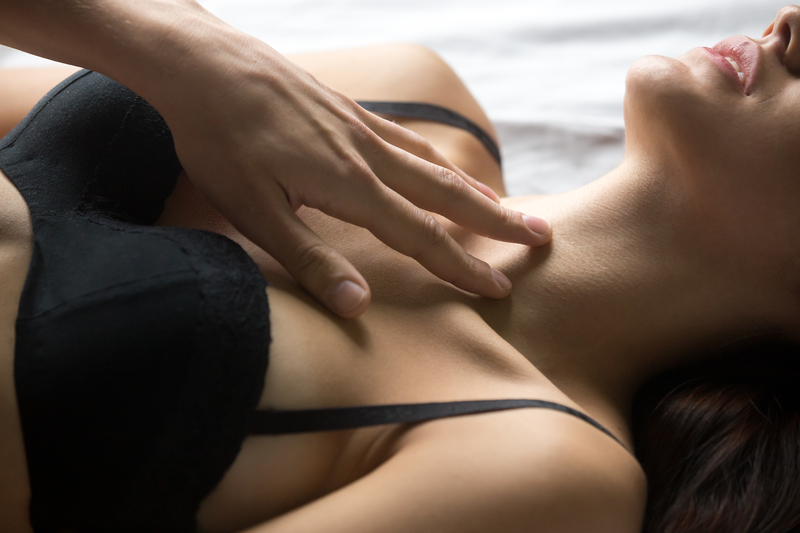
A female’s body will offer a multitude of signs of arousal. Some of the most common physical responses to arousal include an increased pulse and heartbeat, a rise in blood pressure, dilated blood vessels (especially in the genitals), vaginal and vulva lubrication, swollen vulva, labia, and clitoris, possible expansion of the vaginal canal, fuller breasts, and erect nipples (Andersen and Cyranowski, 1995). While it is possible for a woman to experience all these physical responses at once, it is more probable that they will experience only a select number of them.
Additionally, the mind may fall into a greater state of relaxation as arousal is achieved. It may be difficult for a woman to concentrate on something in specific while aroused, as the brain undergoes certain chemical changes during arousal and sexual activity (Bancroft, 1989). And while the brain’s exact changes during intercourse and sexual activity is not completely understood, the brain does function differently at these times (1989).
How Do Female Libido Enhancing Supplements Work?
Female libido enhancing supplements (aka sex pills for women) work by improving the chemical and biological likelihood a female will experience the above-mentioned arousal responses. A female enhancement pill can include one ingredient, a few ingredients, or many ingredients. These ingredients can be synthesized or natural. Some enhancers might also work as aphrodisiacs, encouraging lower inhibitions and greater interest in intimacy. Some enhancers increase blood flow in the genital area (and in other erogenous parts of the body), improving relaxation and ultimately sexual enjoyment. And other enhancers simply improve sensitivity and pleasure during sexual activity. Some herbs and supplements can help improve the female orgasm. In some situations, female enhancement pills can help women with orgasm trouble finally achieve climax (and faster).
In terms of creating a tantalizing experience which is worth remembering, improved memory nootropics can come in handy. For example, Huperzine A, can increase the likelihood of remembering an experience (Cheng et al., 1996). Bacopa monnieri and Rhodiola are also known to improve memory. Huperzine A and Rhodiola are included in Pirate Blast, giving it an additional edge in terms of producing more memorable interactions.
Finding an effective female libido booster may be a difficult task, but it is not rocket science. And while there are many factors to consider when selecting a female enhancement pill, arguably one of the most important constituents of an effective pill is the combination and quality of the ingredients. Fortunately, after analyzing the most popular ingredients used in female enhancement supplements, there are a handful of clear winners!
What Are the Best Herbs for Boosting Female Libido?
Although there are many herbs which improve female libido and enhance pleasure, these plants are some of the best (and with explanations as to why!).
Maca (Lepidium meyenii)
Maca is native to the Andes mountains region, only growing at altitudes of over 3500 m high. While sometimes it is called the Peruvian Ginseng, it has many local names by which it has been known throughout the years. It has been considered one of the most precious herbs in cultures surrounding the area, possessing extremely rich nutrients and health properties (Li et al., 2019). Maca has a history of being used as far back as nearly 6000 years. It has received favorable attention from several international organizations, including the FAO, the International Plant Genetic Resources, the Department of Health Planning in China, and many others.
The curious herb contains components which make it an excellent aide to sexual and fertility enhancement, energy and stamina (anti-fatigue), antioxidation, and more (Wang et al., 2007). Maca root has long been used for its purported abilities to reduce stress and increase relaxation (Korkmaz, 2017). It is reasonable to consider how relaxing the mind can help the body more easily achieve a more aroused state. It is also known to be helpful for improving libido in women experiencing menopause or menopause symptoms (Brooks et al., 2008). Maca is one of the key ingredients in Pirate Blast.
Yohimbe (Pausinystalia johimbe)
Yohimbe has a powerful, historical use as an aphrodisiac in many cultures. Traditionally, Yohimbe has been suggested to offer sexual stimulation properties (Kotta et al., 2013). It is also believed to boost adrenaline supply, specifically to nerve endings and the pelvic nerve network (2013). Yohimbe is also one of the strongest energy-supplying herbs included in many enhancement pill formulae. In fact, many female sex pills with a natural, herbal formula will include Yohimbe. For example, Yohimbe is included in Pirate Blast.
One study on the sexual effects of Yohimbe found that the herb made it easier for individuals to reach orgasm during sexual activity (Kotta et al., 2013). Participants from this same study found orgasms more pleasurable, longer lasting, and an overall increase to sexual vigor (2013). Throughout recent decades, Yohimbe has even earned several libido and intimacy-oriented nick names. And it remains one of the most popular libido-boosting herbs to date.
Rhodiola (Rhodiola rosea)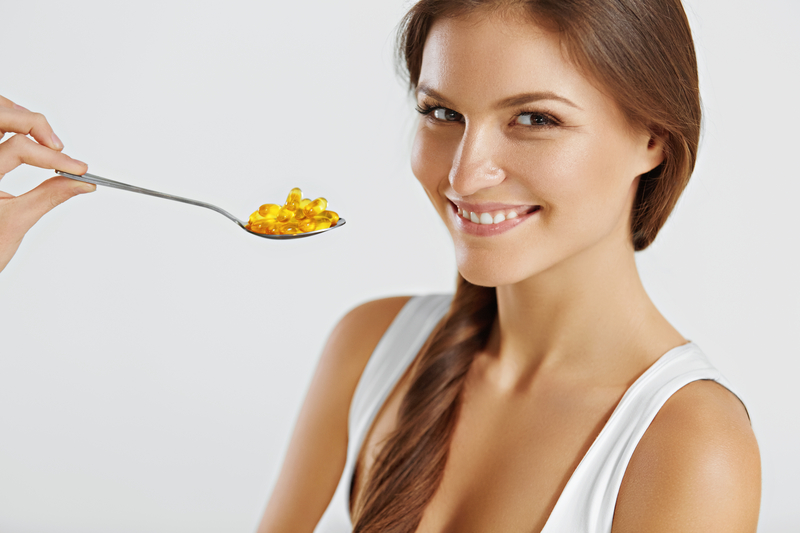
A recent Express news article listed Rhodiola rosea as one of the best, natural herbs for low libido (Turrill, 2018). Within this excerpt, Dr David Edwards (MD) explains the science behind the herb, suggesting in his contribution to the Journal of Sexual Medicine publication that it is helpful in relieving stress, fatigue, exhaustion, and low sex drive. He has also highlighted Rhodiola as a traditional remedy of over 30 years of scientific backing and empirical data (2018). The energy-boosting properties of Rhodiola also make it easier for a woman to give their libido a swift kick in the butt!
Rhodiola is native to the arctic regions of the world (primarily growing in Europe and Asia, although it can also be found prevalently throughout Alaska). It has been mentioned in ancient Greek literature, specifically by Greek physician Dioscorides (Wal and Prajapati, 2019). Dioscorides suggested its use as an adaptogen, offering extreme stress-relieving properties (2019). Rhodiola could arguably be one of the strongest, natural solutions for low female libido. It has been suggested to improve one’s self-confidence, desire for romance, and improved sexual focus (Turrill, 2018).
Panax Ginseng and Korean Red Ginseng (KRG)
Ginseng has been a long part of ancient, Chinese medicine. This is especially true in terms of natural aphrodisiacs. It was even mentioned in ancient Greek texts. Panax Ginseng is a powerful antioxidant, removing damaging oxidizing agents from the body (Kotta et al., 2013). Certain strains of ginseng (such as KRG) have been suggested to improve sexual desire in premenopausal women (Chung et al., 2015). There are a lot of empirical studies on ginseng, especially KRG, and its effects on libido and sexual satisfaction.
One study on menopausal women suffering from female sexual dysfunction proved oral administration of KRG extracts significantly improved sexual arousal and overall sexual desire (Oh et al., 2010). This study specifically supports the use of ginseng as an alternative medicine for menopausal women with low sex drive (2010). And while it may not be the strongest option for low libido, it absolutely makes the list of herbs that help.
Red Clover (Trifolium pratense)
Red Clover is in the legume family, much like a bean that might be found at a salad bar. Unlike a common lima bean, however, Red Clover is revered for its ability to boost libido, especially in females (Lipovac et al., 2011). This is because the herb produces a high-isoflavone phytoestrogen which is close in composition to female estrogen (2011). Hailing from Europe and Asia, it is now naturalized across the world. Red Clover is a popular herb for women in menopause, and for all women suffering from low sex drive. One study showed Red Clover as helpful for mood, sleep, and overall energy (2011). All-in-all, it is a great, natural solution to boost female libido and has well-earned its place on this list.
Green Tea Extract (isolated from Camellia sinensis)
Green tea is generally believed to originate in China, and it is still extremely popular in the country. The tea extract itself is produced from freshly plucked and preserved Camellia sinensis leaves. The tea produced from the correctly preserved foliage is far richer in chlorophyll and other antioxidants (Vishnoi et al., 2018). Green tea offers the body reliable energy and endurance via natural caffeine. The caffeine is much lighter than which is offered in a coffee bean, thus reducing the likelihood of a caffeine crash. Still, there is enough caffeine present to enjoy the favorable, attention-heightening, and energy boost properties of the compound. Green tea extract is used in Pirate Blast for its ability to create energy and focus, helping the libido stay better tuned with increased sexual desire.
Tribulus (Tribulus terrestris)
Tribulus is a caltrop plant, named so for the spiky fruit it bears. The spikes are so sharp they have been known to puncture bicycle tires (Karmelek, 2011). The vine itself has many traditional uses but is commonly turned to for female infertility and libido issues. While there is currently little empirical data supporting these purported claims, some studies have revealed a possible link between Tribulus and increased sex drive (Neychev and Mitev, 2015). Admittedly, these studies typically suggest more research is required (2015).
Fenugreek (Trigonella foenum-graecum)
Fenugreek belongs to the Fabaceae family, with bushy, oblong leaves. It is cultivated around the globe and popular in Ayurveda medicine. Although it is commonly used for culinary applications, it is sometimes used for its aphrodisiac properties. One recent article in the Washington Post reported Fenugreek can amplify sex drive by at least 25 percent (Flock, 2011).
Ginkgo Biloba
Ginkgo Biloba has a tremendous history throughout Chinese medicine. It has been used to treat a variety of ailments, including sexual dysfunction in females. Ginkgo works by improving blood flow to the brain, which in turn improves the brain’s likelihood of increasing libido (Cohen and Bartlik, 1998). While this may not be a direct boost to sexual drive, it is worth mentioning for its indirect, favorable effects on libido.
Combinations of Herbs and Proprietary Blends
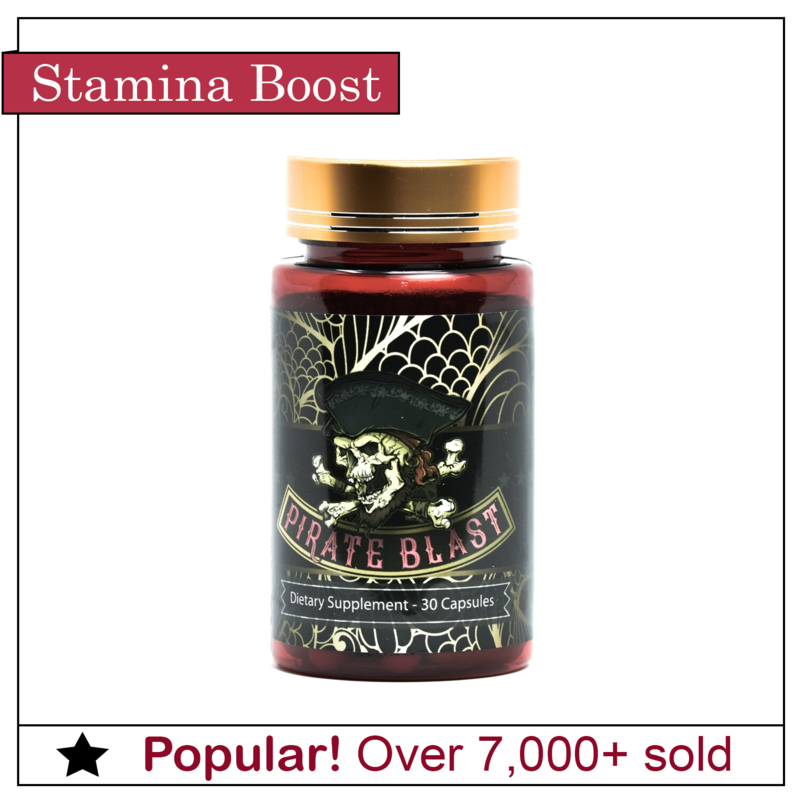 There are many ways to put together a daily female libido enhancing supplement regimen; however, many existing proprietary blends have already isolated proven, effective formulae. These blends often use a combination of the herbs on this list to produce the strongest, libido-boosting supplements. The source of ingredients, care for the harvest, manufacturing process, storage and shipping practices, all play a colossal part in offering an effective libido pill.
There are many ways to put together a daily female libido enhancing supplement regimen; however, many existing proprietary blends have already isolated proven, effective formulae. These blends often use a combination of the herbs on this list to produce the strongest, libido-boosting supplements. The source of ingredients, care for the harvest, manufacturing process, storage and shipping practices, all play a colossal part in offering an effective libido pill.
One powerful proprietary blend, Pirate Blast, is comprised of Yohimbe, Maca, Rhodiola, Green Tea, and Huperzine extracts. Yohimbe and Maca provide the traditional, natural aphrodisiac properties to the formula. Green Tea and Huperzine extracts are responsible for improving energy, focus, and memory-building components of the experience. The ingredients are believed to offer improved performance, increased sexual sensation, sexual vigor, sexual desire (aka libido), stamina, energy, and more!*
A Few Final Words On Female Libido and Enhancement Pills…
The female libido, like all libido, is a curious mechanism. It can be difficult to turn on, “on demand,” however, it is certainly possible to enhance the libido. With the right practice and routines, it is also possible to encourage and entice libido activity (Leventhal, 2000). With correct diet, exercise, and supplements, the female libido can be maximized. It is possible to enhance the libido and any pleasure that may ensure. And it pays to create a supplement regimen with quality ingredients, from reputable sources, which work well together to create the desired effects. For example, weaving the right female libido-inducing herbs together, means producing an effective formula. Pirate Blast is carefully formulated to produce a significant boost to libido, energy, and stamina, as to enhance sexual enticement and enjoyment. With thousands of pills sold and a pharmacist-approved formula, it can always be counted on!
Most women would probably agree it is worth it to improve their libido when they notice any of the typical arousal responses have diminished. And while a woman’s sex drive can be a fickle thing, it is reasonable to assume it easier to be aroused when the body is properly primed for the experience. Some of the easiest ways to prepare the female body for arousal, is by dilating the blood vessels in the genitals (Musicki et al., 2009), bringing the mind to a relaxed state (Finley, 2017), and increasing estrogen (Bancroft, 1989). And thankfully, some formulae, like the one used in Pirate Blast, are specifically crafted with natural, body-friendly ingredients to improve these exact constituents.
*These statements have not been evaluated by the FDA. This article, nor any products or supplements mentioned within the article are meant to diagnose, treat, prevent, or cure any disease.
Sources:
Andersen, B. L., & Cyranowski, J. M. (1995). Women’s sexuality: behaviors, responses, and individual differences. Journal of consulting and clinical psychology, 63(6), 891–906. https://doi.org/10.1037//0022-006x.63.6.891
Bancroft J. (1989). Sexual desire and the brain. Sexual and Marital Threapy. Vol. 3. Pp.11–27.
Block, G., Jensen, C. D., Norkus, E. P., Dalvi, T. B., Wong, L. G., McManus, J. F., & Hudes, M. L. (2007). Usage patterns, health, and nutritional status of long-term multiple dietary supplement users: a cross-sectional study. Nutrition journal, 6, 30. https://doi.org/10.1186/1475-2891-6-30
Britannica, T. Editors of Encyclopaedia (2019, August 29). Libido. Encyclopedia Britannica. https://www.britannica.com/science/libido
Brooks, N., Wilcox, G., Walker, K., Ashton, J., Cox, M., and Stojanovska, L. (2008). Beneficial effects of Lepidium meyenii (Maca) on psychological symptoms and measures of sexual dysfunction in postmenopausal women are not related to estrogen or androgen content, Menopause. Vol. 15(6). Pp. 1157-1162. Doi: 10.1097/gme.0b013e3181732953
Bullivant, S., Sellergren, S., Stern, K., Spencer, N., Jacob, S., Mennella, J. and McClintock, M. (2004). Women’s sexual experience during the menstrual cycle: identification of the sexual phase by noninvasive measurement of luteinizing hormone. J Sex Res. Vol. 41(1). Pp. 82-93. Doi: 10.1080/00224490409552216. PMID: 15216427.
Cheng, D., Hang, R., Hua, T., Xi, C. (1996). Huperzine A, a novel promising acetylcholinesterase inhibitor, NeuroReport. Vol. 8(1). Pp. 97-101.
Chung, H. S., Hwang, I., Oh, K. J., Lee, M. N., & Park, K. (2015). The Effect of Korean Red Ginseng on Sexual Function in Premenopausal Women: Placebo-Controlled, Double-Blind, Crossover Clinical Trial. Evidence-based complementary and alternative medicine : eCAM, 2015, 913158. https://doi.org/10.1155/2015/913158
Cohen A. and Bartlik, B.(1998). Ginkgo biloba for antidepressant-induced sexual dysfunction. J Sex Marital Ther. Vol. 24(2). Pp. 139-43. Doi: 10.1080/00926239808404927. PMID: 9611693.
Finley N. (2017). Lifestyle Choices Can Augment Female Sexual Well-Being. American journal of lifestyle medicine, 12(1), 38–41. https://doi.org/10.1177/1559827617740823
Flock, E. (June 20, 2011). Fenugreek can increase male libido. Washington Post: National. Retrieved from: https://www.washingtonpost.com/blogs/blogpost/post/fenugreek-can-increase-male-libido/2011/06/20/AGOxpqcH_blog.html
Korkmaz, S., (2017). Antioxidants in Maca (Lepidium meyenii) as a Supplement in Nutrition. Intechopen. DOI: 10.5772/intechopen.75582
Kotta, S., Ansari, S. H., & Ali, J. (2013). Exploring scientifically proven herbal aphrodisiacs. Pharmacognosy reviews, 7(13), 1–10. https://doi.org/10.4103/0973-7847.112832
Leventhal J. L. (2000). Management of Libido Problems in Menopause. The Permanente Journal, 4(3), 29–34.
Li, A., Duan, S., and Dang, Y. (2019). Origin identification of Chinese Maca using electronic nose coupled with GC-MS. Sci Rep 9, 12216. https://doi.org/10.1038/s41598-019-47571-0
Lipovac, M., Chedraui, P., Gruenhut, C., Gocan, A., Kurz, C., Neuber, B., and Imhof, M. (2011). Effect of Red Clover Isoflavones over Skin, Appendages, and Mucosal Status in Postmenopausal Women. Obstet Gynecol Int. Vol. 949302. doi: 10.1155/2011/949302. Epub 2011 Nov 1. PMID: 22135679; PMCID: PMC3206499.
Karmelek, M. (2011). The southwest bike tire massacre. Scientific American. Retrieved from: https://blogs.scientificamerican.com/anecdotes-from-the-archive/the-southwest-bike-tire-massacre/
Musicki, B., Liu, T., Lagoda, G. A., Bivalacqua, T. J., Strong, T. D., & Burnett, A. L. (2009). Endothelial nitric oxide synthase regulation in female genital tract structures. The journal of sexual medicine, 6 Suppl 3(S3PROCEEDINGS), 247–253. https://doi.org/10.1111/j.1743-6109.2008.01122.x
Neychev V, and Mitev V. (2015). Pro-sexual and androgen enhancing effects of Tribulus terrestris L.: Fact or Fiction. J Ethnopharmacol. Vol. 179. Pp. 345-55. Doi: 10.1016/j.jep.2015.12.055. Epub 2015 Dec 28. PMID: 26727646.
Oh, K., Chae, M., Lee, H., Hong, H., and Park, K. (2010). Effects of Korean red ginseng on sexual arousal in menopausal women: placebo-controlled, double-blind crossover clinical study. J Sex Med. Vol. 4(1). Pp.1469-77. Doi: 10.1111/j.1743-6109.2009.01700.x. Epub 2010 Feb 5. PMID: 20141583.
Turrill, K., (December 22, 2018). Best Supplements for Low Sex Drive: Taking This Plant Extract could Boost Your Libido. Express. Retrieved from: https://www.express.co.uk/life-style/health/1061992/best-supplements-low-sex-drive-libido-rhodiola-rosea-extract
Vishnoi, H., Bodla, R., and Kant, R. (2018). Green Tea (Camellia Sinensis) and Its Antioxidant Proeprty: A Review. International Journal of Pharmaceutical Sciences and Research. Vol. 1. Pp. 1723-1736. DOI: 10.13040/IJPSR.0975-8232.9(5).1723-36
Wal, A., and Prajapati, S. (2019). Adaptogens With a Special Emphasis on Withania somnifera and Rhodiola rosea. Nutrition and Enhanced Sports Performance: Muscle Building, Endurance, and Strength. 2nd Edition.
Wang, Y., Wang, Y., McNeil, B. & Harvey, L. M. Maca: An Andean crop with multi-pharmacological functions. Food Res Int 40, 783–792 (2007).
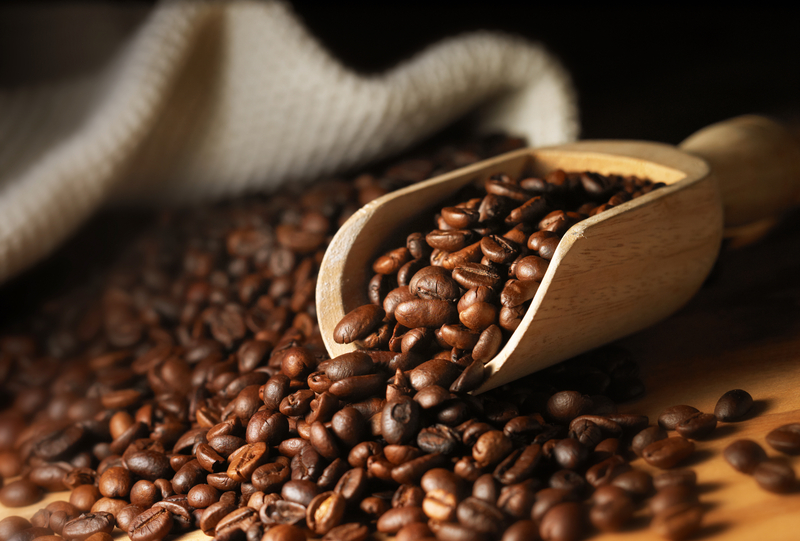 Caffeine is defined as a substance that works in the body as a central nervous system stimulant. It is a part of the methylxanthine class and it is one of the most popular drugs on the face of the planet. It alters mood, behavior, mental awareness, and even thinking. The way it works is by blocking the action of adenosine on its receptors; subsequently, this prevents the body from becoming drowsy. Caffeine is in a lot of supplements, especially when it comes to smart drugs and smart pills. It can be found in energy drinks, teas, sodas, pills, and seemingly hundreds of other products and supplements. It is a common ingredient in many nootropic stacks. Especially nootropic stacks which focus on memory, cognitive function, energy, or overall mental acuity.
Caffeine is defined as a substance that works in the body as a central nervous system stimulant. It is a part of the methylxanthine class and it is one of the most popular drugs on the face of the planet. It alters mood, behavior, mental awareness, and even thinking. The way it works is by blocking the action of adenosine on its receptors; subsequently, this prevents the body from becoming drowsy. Caffeine is in a lot of supplements, especially when it comes to smart drugs and smart pills. It can be found in energy drinks, teas, sodas, pills, and seemingly hundreds of other products and supplements. It is a common ingredient in many nootropic stacks. Especially nootropic stacks which focus on memory, cognitive function, energy, or overall mental acuity. With that all said, the average person consumes between 50 and 90 mg of caffeine per day. This is not hard to accomplish considering the average cup of coffee contains about 70 to 130 mg of caffeine. Ironically, most people have their coffee in the morning, despite the fact it would be arguably more beneficial in the late morning or early afternoon. This is because it can battle the effects of the adenosine building up in the system throughout the day (something we will get into later in this article), but is still early enough to allow the effects of caffeine to wear off before bedtime. Remember, caffeine can last up to twelve hours in the system!
With that all said, the average person consumes between 50 and 90 mg of caffeine per day. This is not hard to accomplish considering the average cup of coffee contains about 70 to 130 mg of caffeine. Ironically, most people have their coffee in the morning, despite the fact it would be arguably more beneficial in the late morning or early afternoon. This is because it can battle the effects of the adenosine building up in the system throughout the day (something we will get into later in this article), but is still early enough to allow the effects of caffeine to wear off before bedtime. Remember, caffeine can last up to twelve hours in the system!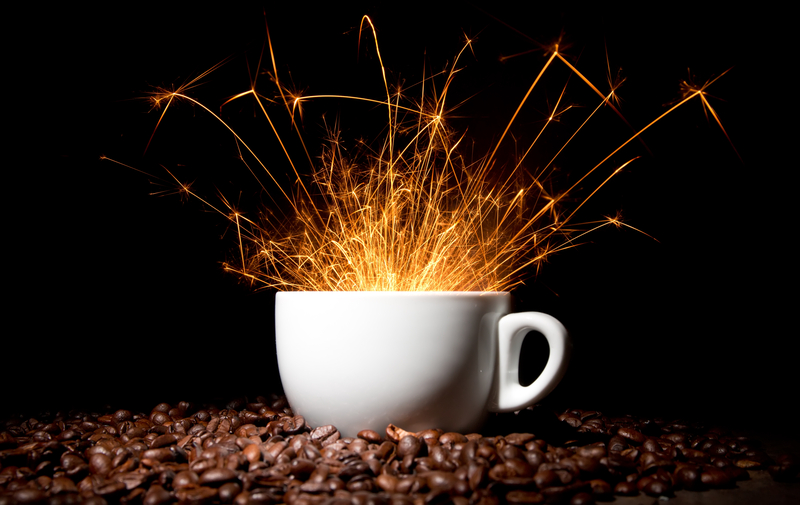 As previously mentioned, caffeine works by inhibiting the process normally allowed through adenosine. It literally binds to the adenosine receptors in its place, ensuring that the cell maintains its normal productivity and cannot slow down. It even speeds up some of the processes produced by these receptors. Basically, caffeine is an adenosine receptor antagonist.
As previously mentioned, caffeine works by inhibiting the process normally allowed through adenosine. It literally binds to the adenosine receptors in its place, ensuring that the cell maintains its normal productivity and cannot slow down. It even speeds up some of the processes produced by these receptors. Basically, caffeine is an adenosine receptor antagonist. Not all nootropic stacks require caffeine to be effective. Some nootropic stacks only focus on the production of memory for example, and there are plenty of nootropic plants which offer memory-enhancing effects without the use of caffeine. But for those stronger, cognitive enhancers, some form of caffeine is almost always included. This is because caffeine can be an excellent aid to the effects other nootropics provide.
Not all nootropic stacks require caffeine to be effective. Some nootropic stacks only focus on the production of memory for example, and there are plenty of nootropic plants which offer memory-enhancing effects without the use of caffeine. But for those stronger, cognitive enhancers, some form of caffeine is almost always included. This is because caffeine can be an excellent aid to the effects other nootropics provide.

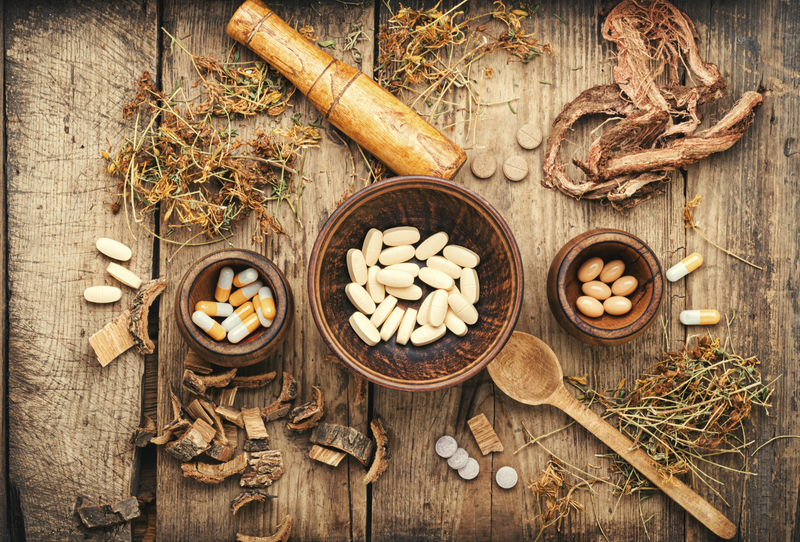 Nootropic cycling should be defined as the modification of dosage plans for a nootropic supplement in order to reduce the tolerance buildup of said supplement, thereby encouraging the maximum effects of the supplement more regularly. A natural development of tolerance is a normal process, and a good thing in the sense that most things in life (substances especially) require some level of getting used to. However, when it comes to a supplement that an individual relies upon in order to achieve certain effects, it can be a real downer when tolerance becomes too high. This is true for nootropics as much as any other supplement.
Nootropic cycling should be defined as the modification of dosage plans for a nootropic supplement in order to reduce the tolerance buildup of said supplement, thereby encouraging the maximum effects of the supplement more regularly. A natural development of tolerance is a normal process, and a good thing in the sense that most things in life (substances especially) require some level of getting used to. However, when it comes to a supplement that an individual relies upon in order to achieve certain effects, it can be a real downer when tolerance becomes too high. This is true for nootropics as much as any other supplement. The reason a substance or supplement is so much more effective from the start is largely due to the concept of physiological surprise. In another sense, it is the first time the body is being acquainted with a substance, and it will metabolize it directly with no regard to homeostasis. The more the body consumes the substance, the more it develops biological adaptations and measures to moderate how the substance is metabolized. This can include critical body mechanisms such as blood pressure, glucose and fluid levels, heart rate, body temperature, and more.
The reason a substance or supplement is so much more effective from the start is largely due to the concept of physiological surprise. In another sense, it is the first time the body is being acquainted with a substance, and it will metabolize it directly with no regard to homeostasis. The more the body consumes the substance, the more it develops biological adaptations and measures to moderate how the substance is metabolized. This can include critical body mechanisms such as blood pressure, glucose and fluid levels, heart rate, body temperature, and more.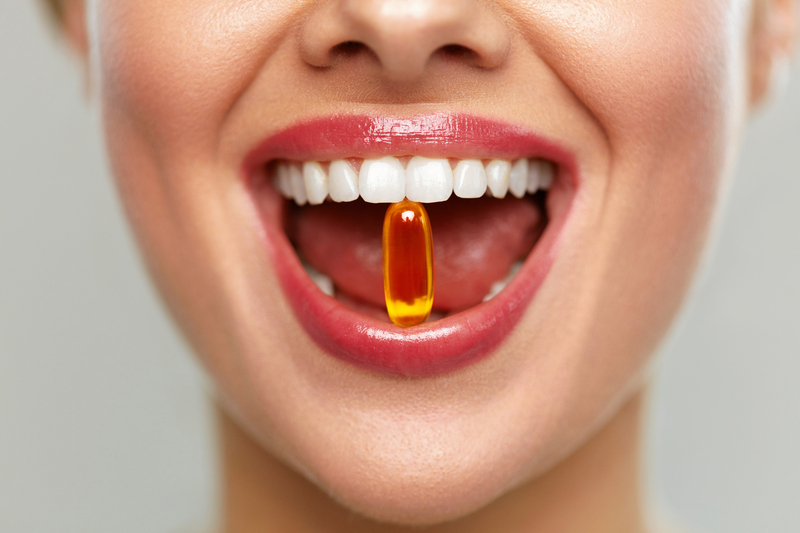 It is worth noting that natural nootropics (as opposed to synthesized nootropics) are some of the lowest tolerance-building nootropics available. Nootropics that are synthesized, such as synthetic caffeine, often require the most cycling, even being suggested for use only 2-4 times per week. Other nootropics which require longer durations in between use include adrafinil, Phenibut, sulbutiamine, racetams, and noopept. Because nootropics such as guarana and green tea extract metabolize as a natural form of caffeine, they can be used more often.
It is worth noting that natural nootropics (as opposed to synthesized nootropics) are some of the lowest tolerance-building nootropics available. Nootropics that are synthesized, such as synthetic caffeine, often require the most cycling, even being suggested for use only 2-4 times per week. Other nootropics which require longer durations in between use include adrafinil, Phenibut, sulbutiamine, racetams, and noopept. Because nootropics such as guarana and green tea extract metabolize as a natural form of caffeine, they can be used more often.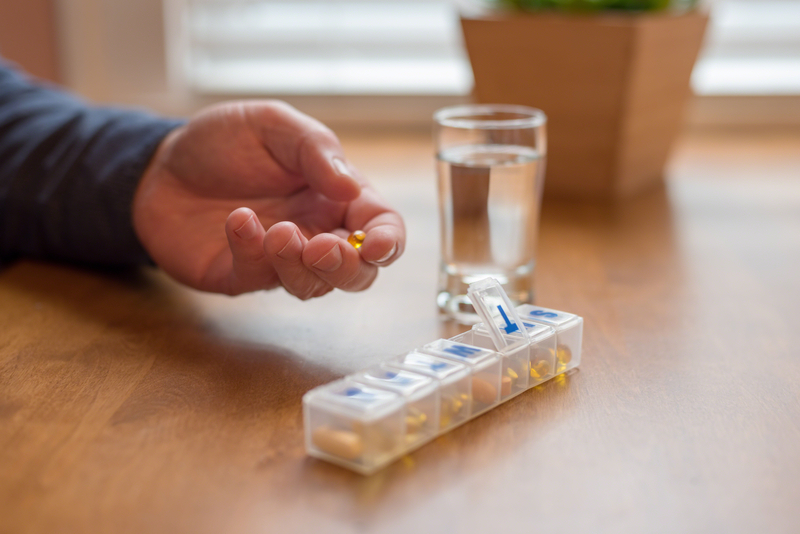 A very popular strategy for Pirate Botanicals supplements is cycling 4-5 weeks on the supplement, followed by 3-4 days off the supplement. This schedule provides the body an opportunity to reset the effects of our supplements and maximizes the overall effects, overtime. The ingredients in Piratall are all-natural and require far less cycling than many other nootropics, making the stack just as valuable in the long run as the short run.
A very popular strategy for Pirate Botanicals supplements is cycling 4-5 weeks on the supplement, followed by 3-4 days off the supplement. This schedule provides the body an opportunity to reset the effects of our supplements and maximizes the overall effects, overtime. The ingredients in Piratall are all-natural and require far less cycling than many other nootropics, making the stack just as valuable in the long run as the short run.

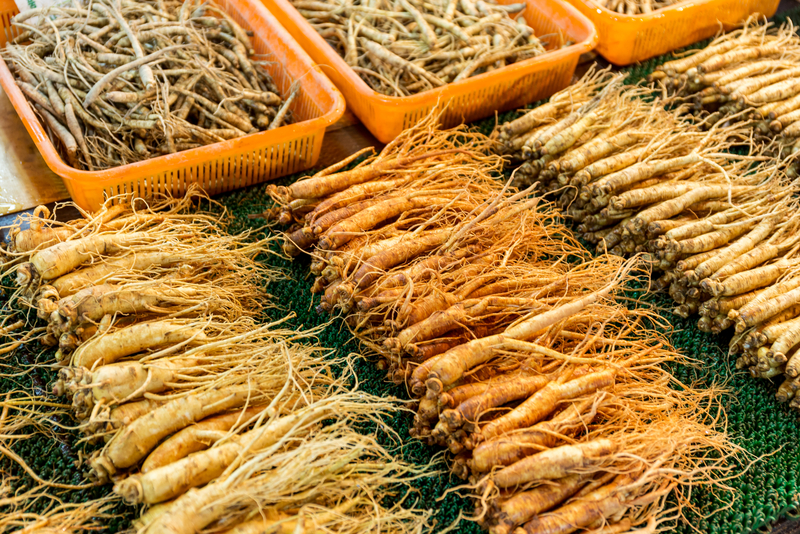 Ginseng is a renowned herb in terms of offering adaptogenic effects. It helps support living organisms in a variety of ways, and in terms of being an adaptogen, helps the body achieve optimal homeostasis. It’s adaptogenic properties are thought to come from its ability to affect the hypothalamic-pituitary-adrenal axis. This results in elevated plasma corticotropin and corticosteroid levels, and ultimately, reduced stress.
Ginseng is a renowned herb in terms of offering adaptogenic effects. It helps support living organisms in a variety of ways, and in terms of being an adaptogen, helps the body achieve optimal homeostasis. It’s adaptogenic properties are thought to come from its ability to affect the hypothalamic-pituitary-adrenal axis. This results in elevated plasma corticotropin and corticosteroid levels, and ultimately, reduced stress.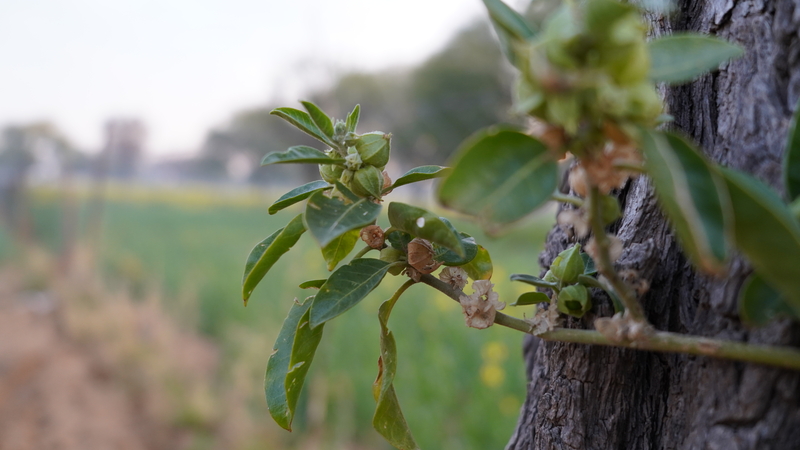 Ashwagandha is a powerful nootropic adaptogen which possesses constituents that may help reduce swelling, lower blood pressure, improve the immune system, and (most relevantly) reduce stress. The herb is well-known for its ability to create a calming effect in the brain. It has been traditionally used to alter the condition of anxiety and unnecessary stress, helping the body resist mental and physical stress levels.
Ashwagandha is a powerful nootropic adaptogen which possesses constituents that may help reduce swelling, lower blood pressure, improve the immune system, and (most relevantly) reduce stress. The herb is well-known for its ability to create a calming effect in the brain. It has been traditionally used to alter the condition of anxiety and unnecessary stress, helping the body resist mental and physical stress levels.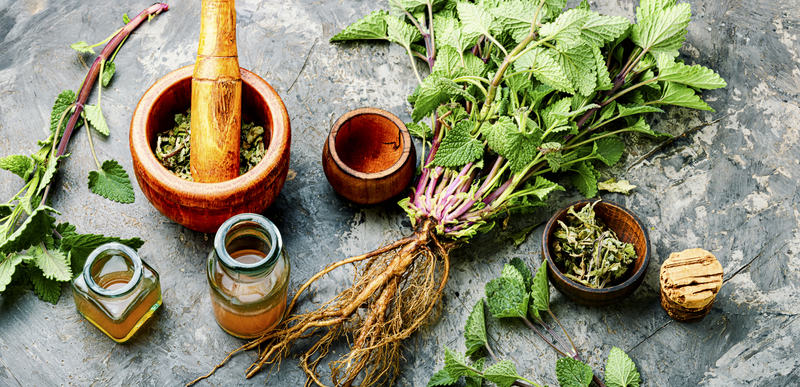 Lemon Balm has been used as an adaptogen for a long time. It is most frequently used in an herbal tea form. It is known to reduce anxiety, promote calmness, and induce a feeling of serenity. It can help with nervous exhaustion and restlessness, while also offering an aromatic fragrance. Lemon Balm is also used to promote a pleasant mood, which comes from its ability to offer the body rosmarinic acid effects.
Lemon Balm has been used as an adaptogen for a long time. It is most frequently used in an herbal tea form. It is known to reduce anxiety, promote calmness, and induce a feeling of serenity. It can help with nervous exhaustion and restlessness, while also offering an aromatic fragrance. Lemon Balm is also used to promote a pleasant mood, which comes from its ability to offer the body rosmarinic acid effects.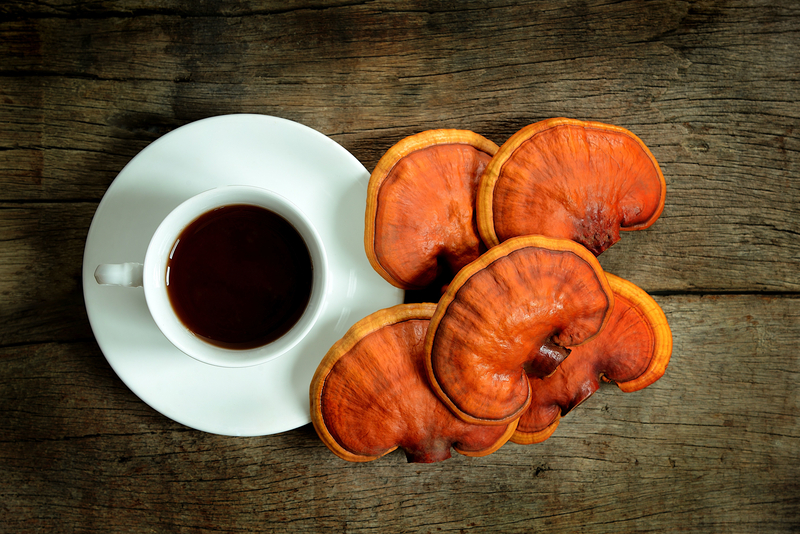 Reishi is another adaptogenic mushroom that helps support the body’s ability to maintain homeostasis. It also helps promote healthy functioning of the adrenal glands. It can boost immune system function and has a molecular structure similar to steroid hormones. Additionally, it is known to increase the stimulation and production of white blood cells.
Reishi is another adaptogenic mushroom that helps support the body’s ability to maintain homeostasis. It also helps promote healthy functioning of the adrenal glands. It can boost immune system function and has a molecular structure similar to steroid hormones. Additionally, it is known to increase the stimulation and production of white blood cells. In a world where information is widely available and so much is known about such a large variety of substances, it is reasonable to assume some of the best nootropic stacks in the world have been developed. These stacks will almost always include a proper, natural, adaptogenic nootropic. Without a healthy dose of adaptogens, it is arguable the body never has a chance to extract the most out of other nootropics within a stack. For this reason, it is reasonably encouraged that any nootropic stack or supplement include a healthy dose of adaptogens to improve overall nootropic effects.
In a world where information is widely available and so much is known about such a large variety of substances, it is reasonable to assume some of the best nootropic stacks in the world have been developed. These stacks will almost always include a proper, natural, adaptogenic nootropic. Without a healthy dose of adaptogens, it is arguable the body never has a chance to extract the most out of other nootropics within a stack. For this reason, it is reasonably encouraged that any nootropic stack or supplement include a healthy dose of adaptogens to improve overall nootropic effects.


